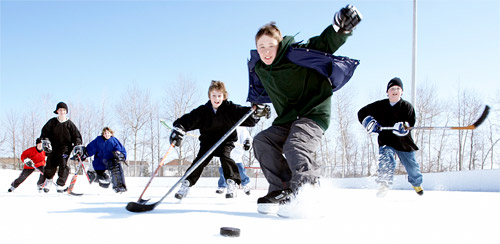 |
 |
|
|
Health Articles:
Alternative and General Health
Musculoskeletal Health
Nutrition and Herbs
Pediatric Health
Senior Health
Sports & Fitness
Women's Health
Ask A Doctor (Forum)
|
How to Avoid Surgery and Stay in the GameBy Brian Jensen, DC The American Academy of Orthopedic Surgeons reported that in 2003, 9.5 million people visited orthopedic surgeons because of knee problems. By now, this staggering number is probably even higher, considering a greater number of children and adults are participating in athletics every year. The most common recommendation regarding knee injuries is to avoid the activities that take place when the knee is injured, such as activities that require stopping and starting or quickly changing directions. It is thought that these extreme forces on the knee can result in torn ligaments; however, they don't result in torn ligaments in everyone, which means there could be some pre-existing contributing factors. To learn why our knees are injured so frequently, it's important to know how the knee works. The knee joint is composed of four bones: the femur, the tibia, the fibula and the patella (see image on facing page). Cartilage covers the joint and provides a smooth, lubricated gliding surface so the knee can move. The shape of the knee joint is stable, but to function properly, the ligaments have to be in good shape, too! Those ligaments include the anterior cruciate ligament (ACL), the posterior cruciate ligament (PCL), the medial collateral ligament (MCL) and the lateral collateral ligament (LCL).

While the ACL works as the main stabilizer when the knee is bent, the PCL works as the main stabilizer when the knee is extended. The collateral ligaments are used when you move side to side. The medial and lateral menisci are located within the joint and act as "shock absorbers" and also influence knee stability. The most commonly injured parts of the knee are the ACL and the medial meniscus. Tears of the meniscus usually take place during twisting, pivoting, or decelerating movements, or as a result of direct impact. When you look for information regarding treatment of knee injuries, you will see two basic categories of medical care: surgical and nonsurgical. Surgical intervention has certainly improved over the past 20 years and typically involves arthroscopic surgery for severely sprained or ruptured ligaments or torn cartilage. The new procedures are far less invasive than techniques used many years ago, resulting in less scar tissue and faster recovery time. Nonsurgical intervention typically involves improving the stability of the knee joint with rehabilitative exercises, focusing on the quadriceps (thigh) muscles and the hamstrings. Bracing is also a common practice to enhance stability by limiting motion in the knee joint. |